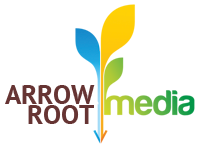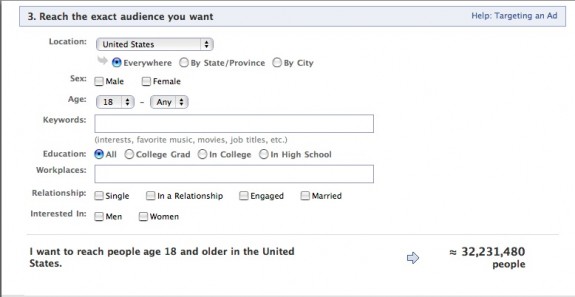OVERVIEW
Over the past year, I’ve produced a few webcasts for dance companies. I recently wrote an article about these webcasts, asking questions – mainly – is it worth it?
For this article, I’ve included a few insights and considerations for producing your own webcast.
The examples I will look at include Misnomer’s webcast in December, DanceBrazil’s webcast in March, and another Misnomer webcast in April. Two of these webcasts were done in conjunction with a season, whereas Misnomer’s performance in April was a work in progress showing.
All of these webcasts were done with a few goals in mind.
1. Diversify Audiences (Build New a Audience, online)
2. Expose current audience members and their friends to the work and company (Broaden our reach)
3. Give audience members who already saw the work (Deepen the experience of existing audience members)
Additionally, it was quite important to consider these webcasts as a web event. These webcasts were successful because they were conceived as a web specific piece. Online audience members were excited to chat with each other and experienced a unique event. In preparation for all events, I prepared online media (photos, blog entries, interviews, slideshows). While preparing these materials, I was conceiving a unique online experience. I thought, “What would hyperlinked program notes look like?” and went about publishing and sharing those materials online.
TECHNOLOGY
The technology required was not too complex. For the Misnomer webcasts, I signed up for an account on UStream.tv. For DanceBrazil’s webcast, I partnered with Dance-Tech.net, and used Mogulus (now LiveStream). LiveStrea and UStream.tv are currently very popular solutions for producing a webcast. Both services offer many broadcasting options, including overlays, pre-roll video, and even a webchat. All of these options were great additions to the webcast. However, the webchat proved to be one of the more engaging experiences. While you are doing your webcast, you can also record video, and archive it. This webcast can also be rebroadcast and embedded on other sites and blogs if you wish. In short, it’s like YouTube, but live.
To produce a good webcast, you will need to ensure your video quality is optimal. Invest in a good camera person, and practice. Just like you would do a tech rehearsal for your stage performance, you should do a tech rehearsal for your webcast. You will be connecting your video signal from your camera (or video mixer) to a computer, so you need to make sure the video looks excellent. You should also ensure your internet connection is optimal. I would not recommend doing a webcast with a wifi connection. To ensure the best quality and the highest speed, make sure your laptop or computer is connected to the web via an ethernet cable.
In addition to a videographer, you should also secure at least one solid person to handle all things online. While the videographer is focused on the image quality and overall video shoot, the online moderator will be focused on the web experience, webchat, and quality of the streaming experience.
After you secure your team (and good internet connection), you will simply connect the video signal to your laptop or computer. UStream.tv + LiveStream both have a fairly straight forward interface. As long as you have your video signal connected to your computer (via firewire), and you are signed into your UStream or LiveStream account you can start broadcasting. Like a good videographer, it is imperative you have someone onsite to monitor the online experience, moderate the webchat, and ensure the web experience is optimal.
SURPRISES
The webcast did not take away from ticket sales. I was chatting live with all the online, I did not encounter any online viewers who opted to see the work online instead of in the theater. Many people who were watching the webcast had already seen the work. Also, some viewers of the webcast were not able to see the work, so this was a nice replacement for them.
There were also many viewers from different countries. All three webcasts were produced from New York City. However, we had visitors from over 19 countries including Brazil, Turkey, Israel, Spain, England, Canada, and Germany. For Misnomer’s webcast in December, we had over 1200 viewers. This means that Misnomer had more viewers – online – in 1 night than they had during the entire run during the New York Season.
Another surprise – more people came to the websites after the webcasts. I archived all 3 webcasts online, and offered viewers a chance to see it again. Since many viewers were not able to make the performance or live webcast, they came to see the video after the fact. With DanceBrazil, more people visited DanceBrazil.org the day after the webcast than any other day of the year. Additionally, many people subscribed to DanceBrazil’s email newsletter as a result of the webcast.
Simply stated, the webcasts provided a great experience for current fans and audience members. They were able to connect with the company in a new way, and on their own time. For many new fans, the webcasts gave them a unique way to experience dance, and ask questions. Several viewers had never seen the company’s work live, and this was their first encounter with the work. On the other hand, some people found the video quality inferior, and did not like watching the performance online.
As video quality continues to improve, and audiences continue to diversify, performing arts organizations will have to diversify their methods of presentation. Providing a high quality experience online and in the theater are equally challenging and essential. Producing a webcast for your audiences is a great way to reach new audience members across the globe, and deepen your current audience’s experience online.
SUMMARY
1. Test. Test. And Test. For all webcasts, we did a few tests.
2. Hiring a good camera person is essential.
3. Testing is also critical. Just like you would tech a show before premiering, do a few tech rehearsals with your streaming gear.
4. Make sure your venue has a fast Internet connection. Don’t use wifi to stream.
5. A webcast is markedly different from a stage performance.
6. Prepare online content for your online viewers
7. Make sure you have an online chat moderator who understands the company and the work.
And finally…
Feel free to contact me with any questions.
RELATED LINKS
Article 19 did a nice overview of Misnomer’s webcast in December.
You can take a look at the article here:
http://www.article19.co.uk/06/written_feature/live_on_the_internet.php
Misnomer’s Webcasts can be found here:
http://misnomer.org/live
DanceBrazil’s Webcasts can be found here:
http://dancebrazil.org/





